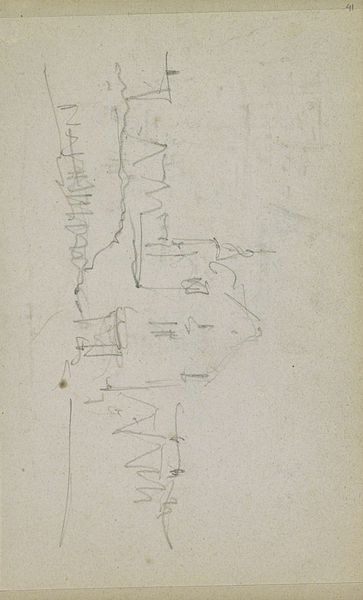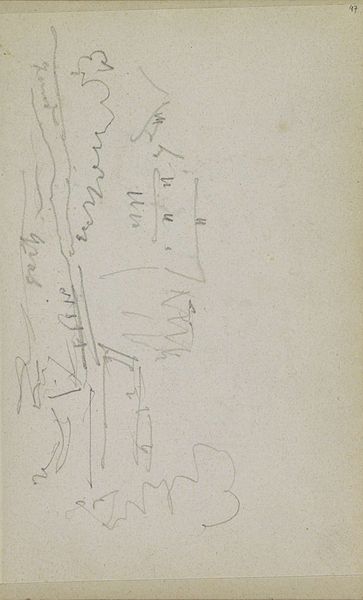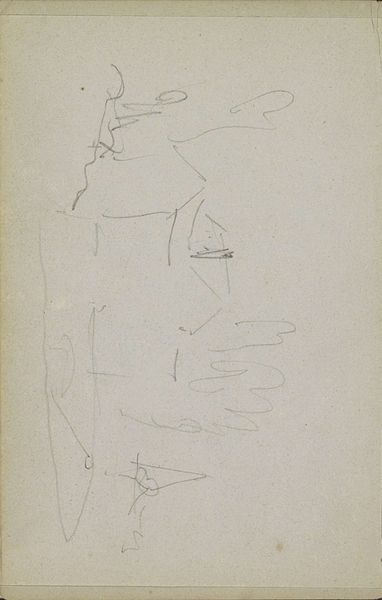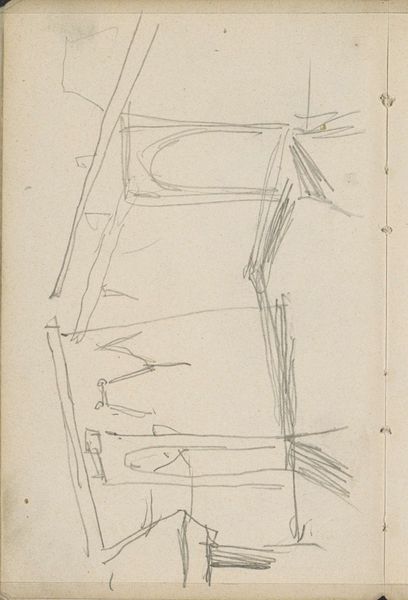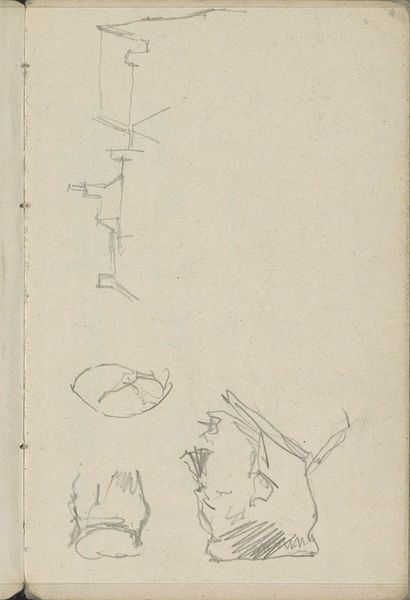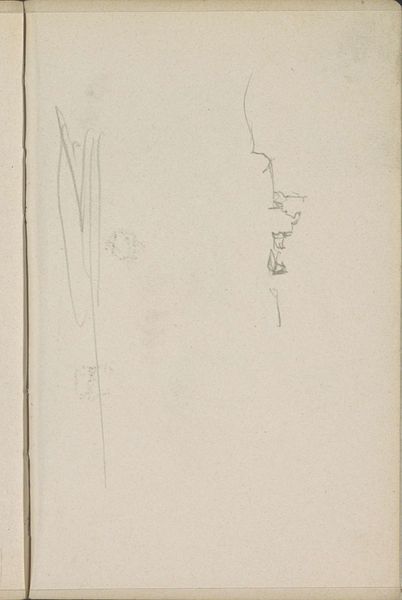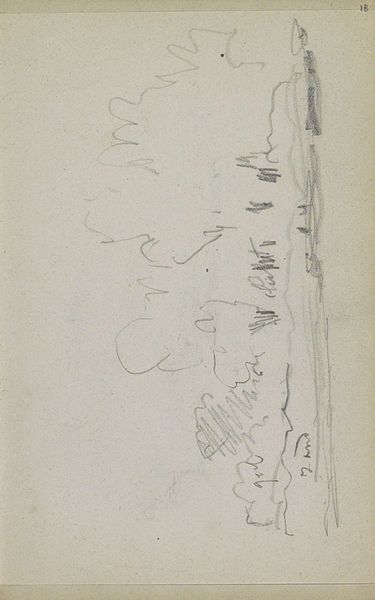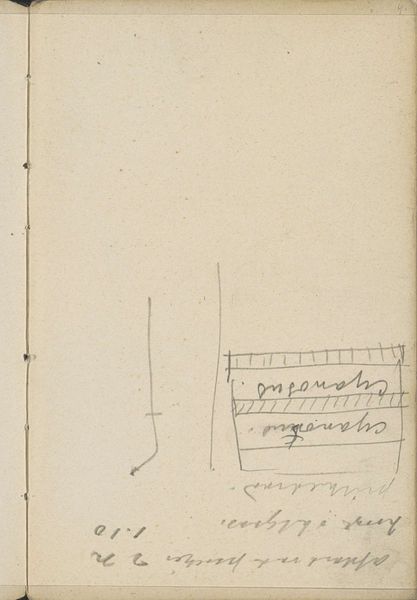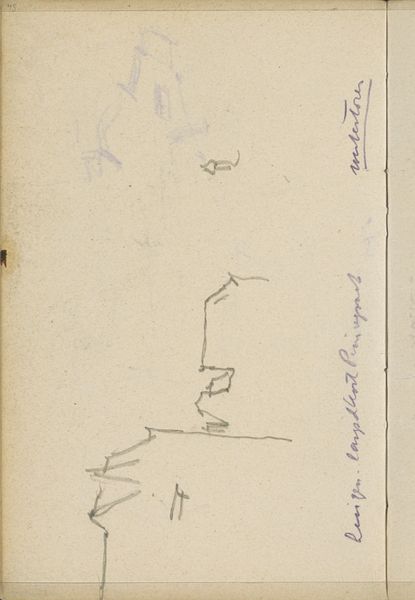
drawing, pencil
#
drawing
#
amateur sketch
#
light pencil work
#
sketched
#
incomplete sketchy
#
landscape
#
personal sketchbook
#
idea generation sketch
#
sketchwork
#
pencil
#
sketchbook drawing
#
sketchbook art
#
realism
#
initial sketch
Copyright: Rijks Museum: Open Domain
Adrianus Eversen made this sketch of a sailing ship sometime in the 19th century. Eversen lived during the reign of Willem I, when the Netherlands had become a leading maritime power. Although just a simple sketch, it’s evocative of the economic prosperity of the time. The trading ships of the Dutch East India Company had become symbols of national pride, and this sketch invokes that sense of national confidence. Here, the visual shorthand of lines become cultural references, triggering associations with Dutch maritime history and the global reach of its trading networks. The sketch can tell us how the culture of the time shaped artistic production, and conversely how artistic production reinforced cultural values and national identity. To understand it fully, we would need to research the economic history of the Netherlands, study the iconography of Dutch maritime painting, and examine the role of art institutions in promoting national pride. In that way the meaning of art is always contingent on its social and institutional context.
Comments
No comments
Be the first to comment and join the conversation on the ultimate creative platform.
